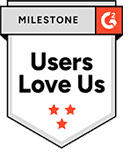 An agile leased real estate portfolio supports an agile workforce
An agile leased real estate portfolio supports an agile workforce
Business agility is a paramount goal for today’s business enterprises. Given the rapid pace of change, and the shortening of one of my favorite metrics- “the meantime between surprises,” management always wants to be able to move on a dime in response to competitive threats, and suddenly emerging opportunities.
Business agility is possible with the new generation of cloud-based software, databases and prolific networks. But the static nature of real estate assets and leases challenges the notion of agility.
Back in year 2000, I collaborated with friends at MIT on a project we called, “The Agile Workplace.” We covered a lot of ground, including various forms of telecommuting, flexible office layouts, and collaborative applications. Our premise was that workplace agility was gained primarily by freeing the workforce from the traditional boundaries of work hours and assigned office locations. A liberated workforce was an agile workforce.
Most of the concepts we advanced then have been adopted over the last twenty years. But how do you make your real estate portfolio more agile?
I believe there are five key factors.
5 key steps to a more agile real estate portfolio
1. Ensure that you have a robust and facile real estate portfolio management software. The system will identify opportunities to transform certain leases into more flexible contracts through renegotiating options and terminations. Use the system to identify locations that are prime sublease opportunities; and rank these locations as priorities for disposition via a sublease.
2. Opt for short term leases going forward. This will give you more flexibility in your real estate portfolio by not tying you down with long term contracts. It will also reduce the impact of the new FASB lease standard. (Longer leases translate into higher net present value for assets and liabilities.)
3. Target highly marketable buildings in desirable markets, to facilitate sublease opportunities. Always consider exit strategies when entering a new lease; since this among other things will increase the agility of your occupancy by making your lease more marketable.
Learn more: Real Estate Market Reports for Enterprise Lease Portfolio Management
4. Strive for uniform office standards and layouts to minimize reconstruction time and complexity. Move toward unassigned workstations, to facilitate a more agile workplace arrangement.
5. Target co-working locations for a portion of the office population. Co-working has proven more flexible (and agile) since the offices are shared on a “just-in-time” basis. In the same vein, expand telecommuting which reduces demand on office space, as well as making a portion of your employees more agile.
Learn more: The Benefits of Co-Working Office Spaces and Flexible Workplaces
Adopt an agility mindset for managing your real estate portfolio
Business agility is a high priority for today’s global organization. We don’t think of the corporate real estate portfolio as a particularly flexible asset class. But by adopting an “agility mindset” in the leasing process, and addressing the factors cited above, it’s possible to move your leased portfolio toward a more flexible and “agile” future state.























